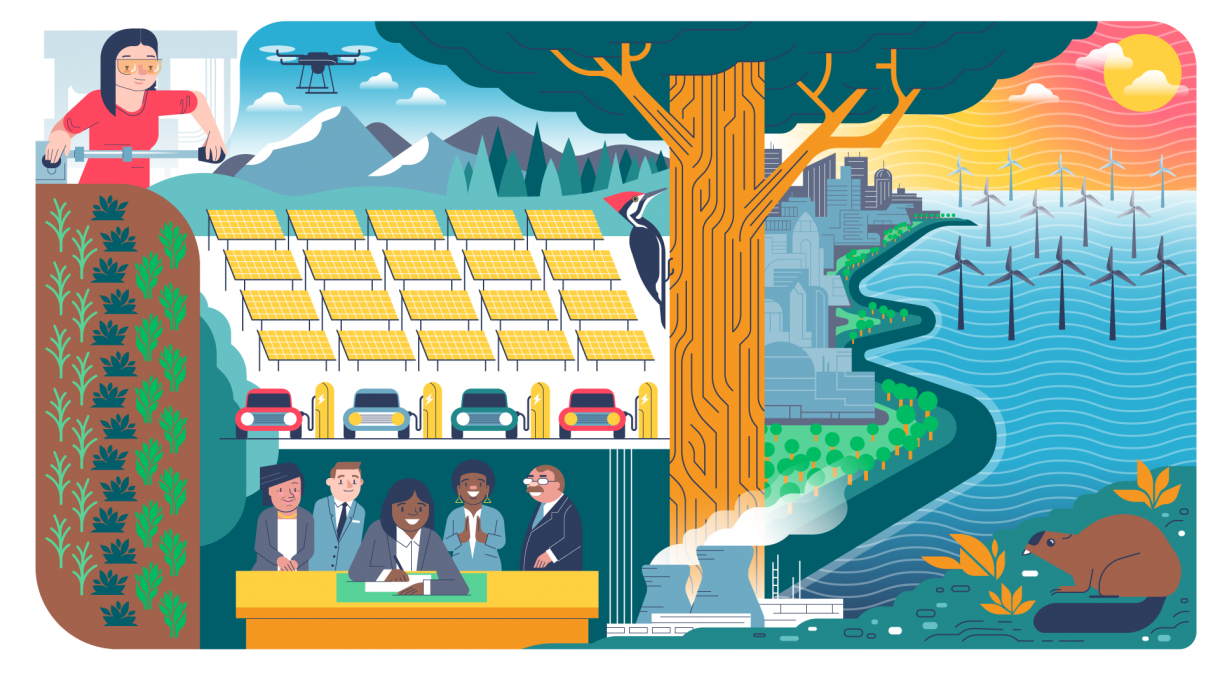
Introduction
Climate change, a pressing issue of our times, has garnered widespread attention due to its far-reaching consequences. The term “klimate change” is used interchangeably with “climate change,” encompassing alterations in global weather patterns, temperatures, and ecosystems. In this article, we delve into the intricacies of klimate change, exploring its causes, effects, and the imperative need for collective action.
1. The Causes of Klimate Change
1.1 Human-Induced Greenhouse Gas Emissions
The excessive release of greenhouse gases, primarily carbon dioxide, methane, and nitrous oxide, is a leading cause of klimate change. These gases trap heat within the Earth’s atmosphere, leading to a rise in global temperatures.
1.2 Deforestation and Land Use Changes
The clearing of forests for agriculture, urbanization, and other purposes contributes to klimate change. Trees play a pivotal role in absorbing carbon dioxide, and their removal disrupts this vital process.
2. The Impact of Klimate Change
2.1 Rising Sea Levels
The melting of polar ice and thermal expansion of seawater due to warming lead to rising sea levels. This phenomenon poses a threat to coastal communities, habitats, and infrastructure.
2.2 Extreme Weather Events
Klimate change intensifies the frequency and severity of extreme weather events, such as hurricanes, heatwaves, and droughts. These events have devastating socio-economic and environmental implications.
2.3 Biodiversity Loss
Shifts in temperature and ecosystems endanger various species, leading to reduced biodiversity. This disrupts natural balance and affects food chains and ecosystems.
3. Mitigation and Adaptation Strategies
3.1 Transition to Renewable Energy Sources
Shifting from fossil fuels to renewable energy sources like solar, wind, and hydropower is crucial for reducing greenhouse gas emissions and combating klimate change.
3.2 Reforestation and Afforestation
Preserving existing forests and planting new trees help absorb carbon dioxide, mitigating the effects of klimate change.
3.3 Sustainable Agriculture Practices
Implementing sustainable farming techniques reduces emissions from agriculture and enhances soil health, contributing to klimate change mitigation.
4. The Role of International Collaboration
4.1 The Paris Agreement
The Paris Agreement symbolizes a global commitment to limit global warming by reducing greenhouse gas emissions. It underscores the significance of international cooperation in tackling klimate change.
5. Overcoming Challenges
5.1 Economic and Political Barriers
Efforts to address klimate change often face challenges stemming from economic interests and political complexities.
5.2 Public Awareness and Education
Raising public awareness about klimate change and its consequences is essential for garnering support and driving positive change.
6. Conclusion
Klimate change demands immediate attention and action from individuals, communities, governments, and industries. By embracing sustainable practices, transitioning to cleaner energy sources, and fostering international cooperation, we can mitigate its impact and pave the way for a more sustainable future.
FAQs About Klimate Change
Q1: What is the main driver of klimate change? A: Human-induced greenhouse gas emissions, particularly from burning fossil fuels, are the primary driver of klimate change.
Q2: How does klimate change affect wildlife? A: Klimate change disrupts habitats and ecosystems, leading to shifts in wildlife distribution, behavior, and endangerment.
Q3: What can individuals do to combat klimate change? A: Individuals can reduce their carbon footprint by conserving energy, using public transportation, and supporting sustainable products.
Q4: How does deforestation contribute to klimate change? A: Deforestation reduces the Earth’s capacity to absorb carbon dioxide, leading to higher atmospheric concentrations of greenhouse gases.
Q5: Why is international cooperation crucial in addressing klimate change? A: Klimate change is a global issue that requires collective action to effectively reduce emissions and mitigate its impact.

